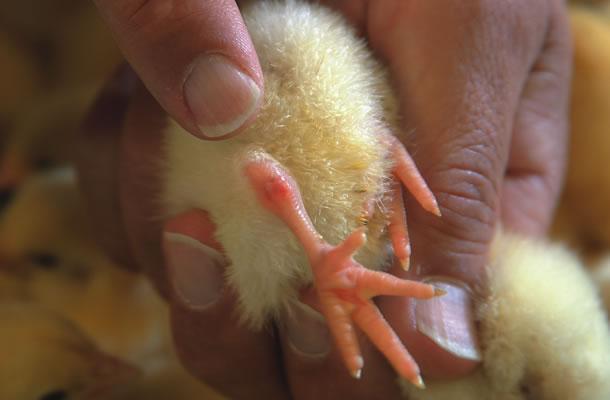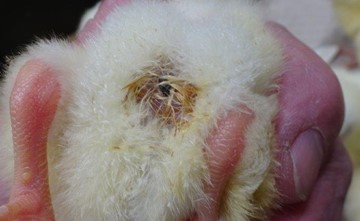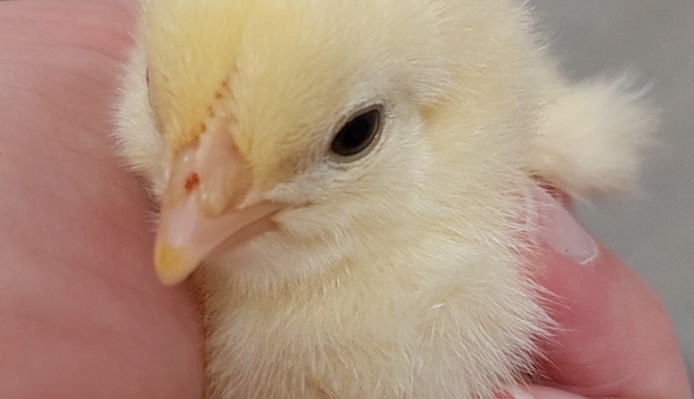Pasgar score – an easy chick quality assessment method
Tags: Chick handling | Whitepaper
, 3 September 2025

Chick quality assessment can be subjective, which is why Royal Pas Reform developed the Pasgar score – a simple and quick way to make chick evaluation more objective.
Why was the Pasgar score developed?
We realised at Pas Reform Academy that there was no simple and easy assessment available for chick quality. The Tona score is very good for scientific work, but too labour intensive to use in the hatchery. The inspiration for the Pasgar score was the Apgar score, which is used for newborn human babies.
When should the Pasgar score be performed?
The best moment to do the Pasgar score is before selection. In this way, you assess the chick quality as hatched, which will give information on your incubation process. If the Pasgar score is done after selection, it will provide information on your selection procedure of saleable chicks, but much less on sub-optimal incubation conditions.
How does it work?
The Pasgar score consist of five evaluation points. For each item, the chick can score 0 or 1. If the described defect is absent, the score is 0. Each defect that is present on the chick scores one penalty point. This means that a perfect chick scores a 10, and a chick with red hocks and a thick belly scores an 8. A chick can be scored on a range from 10 to 5. If a chick scores a 5, this means that it scored badly on all five evaluation points.
| Chick no. | Reflex | Navel | Hocks | Beak | Belly | Pasgar score |
| Chick 1 | 0 | 1 | 0 | 0 | 0 | 9 |
| Chick 2 | 0 | 0 | 0 | 0 | 0 | 10 |
| Chick 3 | 0 | 0 | 1 | 1 | 0 | 8 |
| Chick 4 | 0 | 0 | 0 | 0 | 0 | 10 |
| Chick 5 | 1 | 0 | 0 | 0 | 0 | 9 |
| Total | 1 | 1 | 1 | 1 | 0 | 46/5=9.2 |
Table 1: An example to show how the Pasgar score is recorded. The average batch score is calculated by vertically taking the sum of the Pasgar scores, which is in this case 46, and dividing it by the number of chicks assessed. By also recording the sum vertically, you can easily see which category needs attention.
A random sample of a minimum of 30 and preferably 50 chicks per batch is needed to obtain a good average batch score. The chicks should be taken from several hatcher baskets from different places in the hatchers. If the Pasgar score is performed frequently, a hatchery-specific reference can be generated that includes flock age, for example, for better insight.
The batch score is calculated by taking the total Pasgar score and dividing this by the number of chicks analysed (in the example above, 46/5 = 9.2). The batch score of an acceptable hatch should be a minimum of 9.0 but preferably higher.
How to obtain the Pasgar score
- Reflex – Gently place the chick on its back on a flat surface or a fully opened hand. The chick is vital if it turns over from lying on its back to standing on its feet within seconds (score = 0). If this action takes more than three seconds, the chick scores one penalty point for reflex.

Take the chick in your hand so that the navel is facing you. This allows you to assess the navel, hocks, beak and belly in one go without having to change the position of the chick in your hand.
Picture 1: This chick failed to stand within three seconds and therefore scored one point. - Navel – Feel for the navel with your index finger and blow the fluff away to see the navel. If the navel is not clean, closed and dry, for example there is a black scab or string, the chick scores one penalty point.


Picture 2 and 3: The chick on the left has a string navel; the chick on the right a large black scab. - Hocks – If a red patch is visible on one or both hocks, the chick scores one penalty point. Dehydrated legs are not included in the Pasgar score.

Picture 4: This chick shows a clear example of a red hock and therefore scores one point. - Beak– If there is dried blood in the nostrils, a red dot on top of the beak or dried albumen, the chick scores one penalty point.


Figure 5 and 6: The chick on the left has black nostrils (dried blood); the chick on the right a red dot. - Belly – The belly should feel supple. If it feels tight, the residual yolk sac is too large and the chick scores one penalty point.
Concluding remarks
The strength of this scoring system is that it is very simple and easy and quick to teach to new staff. It is related to the most common incubation problems and has therefore become widely known and used since its introduction. However, not all imperfections, such as dirty fluff or dehydrated legs, can be scored as the Pasgar score does not include these items. Even a chick with a cross beak or a star gazer would, in theory, score a 10 with this method as it does not include malformations. There is also no room for nuance. For example, a chick may have a very small black scab on its navel but will receive the same score as a chick with a large scab, while the first would still be a saleable chick and the last a cull. It is of course possible to add nuance by making additional notes on the recording form, or changing a 1 to a 2 for a more severe problem to give that chick a lower score. It is also important to discuss with colleagues who also perform the Pasgar score in your hatchery when to score 1 and when not.
Advice
- Make the Pasgar score a part of your hatchery’s SOP (Standard Operation Procedures). This makes it possible to develop your own hatchery-specific standard, and makes it easier to observe trends and identify a reoccurring problem or incident.
- Review your incubation processes if the Pasgar score is below 9.
- Combine the Pasgar score with other observations such as empty shells and an egg breakout of unhatched eggs.
- Use a trouble shooting list to review your incubation processes, but always start by measuring eggshell temperatures. Many of the described defects are caused by too high eggshell temperatures in both the setter and the hatcher
Written by Lotte Hebbink
Incubation specialist
I welcome your feedback on this article - and if you require any additional information, please don't hesitate to contact me.